- Home
- Marcia Talley
This Enemy Town Page 5
This Enemy Town Read online
Page 5
During the first week of our partnership, Gadget and I reached what I considered a fair and equitable division of labor on oven construction: Gadget ran wires, installed electrical switches and lightbulb sockets. I bought the red lightbulb at Safeway, screwed it in, and—tah-dah—flipped on the switch.
We’d been waiting around all week for the smoke machine to be delivered, and by the time it appeared on the loading dock, we’d become a well-oiled team. I held the tool bag, passing tools to him like an operating room nurse while Gadget unpacked the equipment, secured the smoke machine to the floor just behind the oven, and got the whole thing going.
“You are wasted on the Naval Academy,” I told Gadget as we stood in Row C, arms folded across our chests, admiring our handiwork. The oven crouched on four stubby legs, stage left, belching smoke and glowing crimson, like a malevolent Easy-Bake oven. “You should be working for NASA.”
Gadget blinked pale blue eyes at me from behind his rimless eyeglasses. “I’m going nuke,” he said.
“Submarines?” The news didn’t surprise me. Only midshipmen at the very top of their graduating class were selected for the nuclear Navy. Gadget was so smart he’d probably be the first midshipman in history to graduate with more than a 4.0.
“Yoo-hoo!” It was Dorothy, standing “upstairs” in Sweeney’s tonsorial parlor, shading her eyes against the glare of the stage lights. “I could use a little technical expertise up here!”
Actually, Dorothy had seemed hyperenergized that week, banging away with little help or complaint on the scaffolding above my head—the second floor of Mrs. Lovett’s pie shop. “Get me while you can,” she had chirped down to me on one occasion. “I go back to the oncologist on Tuesday, so by Wednesday, I’ll be back to barfing.”
I could relate to that. I’d once been so ill from my chemotherapy that I’d watched all of Killer Klowns from Outer Space because I was too exhausted to reach across the bed for the remote. So, I took Dorothy at her word. Earlier in the week, we raided the antique shops in West Annapolis, furnishing Sweeney’s chamber with a coat tree, a low bookshelf, a sofa-sized painting in a rococo frame entitled The Barque Geelong Off Hong Kong, and a large wooden chest with brass studs and leather straps, just the thing to hold the body of Perelli, rival barber to Sweeney Todd and Sweeney’s first victim.
For a mere $120 plus tax we’d scored an actual red and white barber pole at Absolutely Fabulous Consignments, then celebrated our coup over luscious, grilled Reuben sandwiches—three napkins required—at Regina’s German deli just next door. We figured we’d earned it.
All the props were in place now at Sweeney’s except the most important—his chair. Rented from a theater company in Virginia, the Victorian-style barber chair had made its appearance on the loading dock about the same time as our smoke machine, and Dorothy, Sweeney, and the two midshipmen in charge of trapdoor and body chute construction were wasting no time getting it installed. Made of solid wood with a seat and back of woven cane, the chair was a veteran, having dispatched hundreds of Sweeney’s victims in theaters all the way from Maine to Florida.
“Guinea pigs!” Dorothy shouted. “I need guinea pigs!” Behind her, Sweeney and one of the tech crew were carefully aligning a short pipe that extended from the bottom of the chair with a metal plate on the floor. “Come on!” she urged when nobody made any effort to step forward. “I need volunteers to go down the chute, otherwise we won’t know where to position the chair.”
Professor Black materialized at my elbow. “Don’t need any cracked heads on my watch,” he muttered.
“Hellooooooo?” Dorothy warbled.
Still nobody stepped up to the plate.
I gently elbowed Professor Black. “What’s the problem?”
“Beats the heck out of me.”
And me, too. Midshipmen maintain themselves in peak physical condition. They are required to run a mile in under six minutes, jump from a forty-foot tower into a tiny pool of water, and leap tall buildings in a single bound, or they don’t graduate. You’d think a trip down a chute the length of your average playground slide would be, well, child’s play.
Professor Black apparently agreed. He began pin-wheeling his arms. “Murphy! Crenshaw! Tyler! Get out here, the lot of you! It’s show time!” Surprisingly spry for a man of his girth, the professor hopped onto the stage, and as each actor straggled in from the wings, began herding them like some tweedy sheepdog into a line that snaked, single file, up the stairway leading to Sweeney’s tonsorial parlor.
Gadget and I watched as the first victim settled himself into Sweeney’s chair, a mix of anticipation and apprehension alternating across his face. The actor playing Sweeney, standing just behind, pantomimed the throat slitting bit and yanked on the back of the chair, causing the seat to shoot forward, depositing his victim feet first through the trapdoor. “Next!” sang Sweeney in a lyrical baritone.
Two more victims were successfully launched through the trapdoor and down the chute. After each, Dorothy and the technician would confer, slightly reposition the chair and adjust the mounting plate accordingly.
By the time everything was screwed down tight, the trials had attracted a handful of daredevils, midshipmen who probably spent their leave time driving their SUVs from theme park to theme park, riding roller coasters with names like Anaconda, Shockwave, and Screamin’ Demon. Queued up rather haphazardly on stage, they jostled for position, waiting for the opportunity to sit down in the chair, have their throats slit, and play dead as the floor gave out beneath them. For these guys, everything, even mealtimes, could turn into a competition, and pretty soon Saturday morning rehearsal had become an Olympic event.
“Eight point seven!” somebody shouted as another victim shot out the end of the chute.
“Nine point three!” said another.
And we all fell about the auditorium laughing.
“Hey, Hannah. How about you?”
I gaped at Dorothy. “Me?” I tapped my chest with my thumb. “You talking to me?”
Dorothy waved me onstage. “You said you wanted to give it a try.”
“I don’t remember saying that.” I smiled uncertainly, watching as Sweeney skillfully dispatched another victim. He was practicing with his razors now, big scary metal objects with seven-inch blades that had been modeled on a traditional straight razor and fabricated out of a single piece of steel by a local company that usually manufactured hard-to-find parts for boats. There was no edge, of course, and therefore absolutely no danger of Sweeney cutting anyone’s throat for real, but from the audience, the razors looked menacing. Between victims, Sweeney twirled the razors, and the metal flashed between his fingers, filling the darkened theater with twinkling shafts of light.
I swallowed hard, considered the chair and the razors, thinking how embarrassed my family would be if my obituary read, “Killed in a bizarre accident involving a barber chair.”
“Hannah?”
Some cheeky mid behind me began making discreet clucking noises.
“Oh, all right!” Holding onto the rickety wooden railing for dear life, I climbed the steps to Sweeney’s shop, where the pseudobarber welcomed me into his chair with a polite bow. The Pair-o-Docs, Professors Black and Tracey, clapped encouragingly from the wings. Dorothy bounced up and down on her toes. I imagined everyone else was holding their breaths.
Keeping one cautious eye on Sweeney, I backed into the chair, squirmed a bit and took a deep breath myself.
Slice’a da throat, light-a da light, shriek-a da whistle. My head shot back, the ground opened up beneath me, and I was completely at the mercy of gravity. Yee-haw! One second later I lay in an untidy heap on a wrestling mat inside Mrs. Lovett’s pie shop, laughing my head off.
Gadget extended a hand, helping me to my feet. “Bravo zulu,” he said. Navy speak for well done.
“Thanks.” I brushed sawdust off my sweat pants. “That’s almost as exciting as the Volcano Pool at the Polynesian Village Resort.”
“Disney Wor
ld?” he asked.
I nodded. “We took the grandkids down last summer. You climb to the top of this fiberglass mountain, then shoot down a long slide built inside it—whoosh!—into the pool.”
Gadget and I headed for the tech room at stage right, down a short flight of steps and into a weirdly shaped cubbyhole of a room furnished with an odd assortment of castoff furniture, its walls densely painted with the names of cast members who had appeared in Academy productions going well back to the 1930s. A computer, a television, a VCR, piles of cheap paperback novels and videotapes—I saw Mulan, Rambo, Shakespeare in Love, and Animal House—a gooseneck lamp and loose wires and extension cords leading God knows where. All the comforts of home.
“We spent a fortune on Magic Kingdom tickets,” I said as Gadget held open the door and waited for me to go through ahead of him. “But forget about Mickey! I think the kids would have been happy to spend the whole four days at the pool, sluicing down that lava tube.”
I helped myself to an oatmeal cookie from a package sitting open on the table. “I did it a couple of times,” I added, taking a bite. “Damn thing was over thirty feet long, twisting and turning.” I gestured upward with the cookie in the general direction of the stage. “Much more dangerous than that, anyway.”
Gadget rapped three times on the battered tabletop. “Knock on wood.”
“You think that’s necessary?”
Gadget shrugged. “You never know. We put it together pretty fast.”
I finished off the cookie and licked the crumbs off my fingers. “I’m not worried. This is an engineering school, isn’t it? You’re engineers. You’re supposed to be able to build things.” I grinned back at him, then, thinking about the rickety handrail, rapped three times on the tabletop, too.
As my mother always said, “Better safe than sorry.”
CHAPTER 5
Victorian London: it surrounded me. Gentlemen in top hats. Ladies in bustles and bonnets and bows. Butchers and bakers and candlestick makers. Beggars, grave diggers, Gypsies, the odd escapee from Bedlam, and a stick-twirling bobby or two. I’d been teleported—T-shirt, paint-smeared blue jeans, Nikes, and all—directly into a set for Charles Dickens’s Christmas Carol. When I closed my eyes, I could even smell the nineteenth century—but when I opened them again, it was only a half-eaten steak sub with onions that an actor had abandoned on a nearby chair.
The theater was filled with sound, too, a glorious cacophony as the orchestra members wandered into the pit, unpacked their instruments, and began tuning up. They were accompanied by saws, drills, and hammers, musical themselves in their whines, drones, and rat-a-tat-tats as, working frantically together, we neared the firm deadline imposed by opening night.
I’d finished painting the steps leading up to Sweeney’s parlor, cleaned my brushes in turpentine, and took a well-deserved time-out to watch with some amusement as Gadget helped the sound engineers fit the leads with body mikes. He’d lined the mikes up along the edge of the stage, marked each one with an actor’s name using masking tape, and was checking their batteries—the square, nine-volt kind—for juice. Gadget being Gadget, he’d chosen the high-tech way, by pressing his tongue against both terminals.
My cell phone vibrated against my ribs. It was Dorothy, leaving a message that she wanted to consult with me about something. Not seeing anything productive in watching Gadget systematically destroy his taste buds, I returned her call. She didn’t pick up, so I went looking for her.
Dorothy wasn’t taking a break in the tech room as her message had indicated, so I hustled off in the opposite direction, through a narrow, almost invisible doorway and down an even narrower flight of stairs. I paused on the half landing that opened into the other hidey-hole where actors and amorous, in-the-know couples seeking privacy often hung out: the Jabberwocky room. Painted flat black, the walls of the Jabberwocky room were decorated with large-scale, surprisingly faithful copies of Tenniel’s illustrations from Alice in Wonderland. Alice had been swimming up the stairway wall with the Dormouse ever since the 1940s, and on the far wall, behind a rickety bookshelf, she had spent decades sipping endless cups of tea with the Mad Hatter et al. Alas, there was no sign of the Jabberwocky, who at some time beyond recent memory had been painted over with an enormous map of Tolkien’s Middle Earth by someone with little skill and even less taste. Because of her recent chemotherapy treatment, I had suspected that Dorothy might be resting on the large white sofa that dominated the room, but she wasn’t there.
I toddled down the remaining steps that took me to the lower dressing room level and stuck my head through the door. “Hello? Anybody home?”
I was talking to myself. Everyone appeared to be somewhere else, except for a chorus line of Styrofoam heads that stared at me eyelessly from a shelf. The heads were wig stands, but at that moment they simply sat there on their necks, eerily; wigless and bald, reminding me, sadly, of Dorothy. The last time I’d seen her, she was still wearing that moth-eaten wig. Maybe she hated the hats I brought her? Plan B was to lure Dorothy and that wig of hers down to Karen James’s beauty salon on Maryland Avenue. If anyone could coax it into a more updated hair-style, Karen James could.
Wondering if Karen’s place had an emergency entrance, I turned my back on the wig stands and wandered into the dressing room proper. Mirrors covered the walls on both sides, and makeup, book bags, and assorted articles of clothing were strewn about everywhere. Mounted on the wall next to a pair of gigantic pipes at the far end of the room was a strange, dark gray box, which on closer examination appeared to be a radio. I flipped the switch on and nearly jumped out of my Nikes.
“Tobias! Don’t talk to me, talk to the audience!”
I spun around, but Professor Black wasn’t anywhere in the vicinity. When I could breathe again, I realized that the box had to be an intercom piping sound in directly from the stage some twenty feet overhead. “Plot, plot, plot!” the director shouted above the strident scrape of student violins not yet ready for prime time and the relentless pounding of the electric piano. “If they can’t understand the words, they won’t know what’s going on! Talk to the people in the back row!”
Grinning to myself, and feeling a bit sorry for the actor playing Tobias, I continued into the hallway, past the rooms that housed the Academy’s telephone switchboard—always locked up like Fort Knox, for some reason known only to AT&T and the head of building and grounds—and out the back door onto the lawn. I was heading toward the set shop in Alumni Hall. Unless Dorothy had gone home sick, I couldn’t imagine where else she could be.
The enormous cargo door in the back of Alumni Hall yawned open, thank goodness, so I didn’t have to walk all the way around the building and let myself in the front. I passed through its jaws into the belly of Alumni Hall, where the staff seemed to be getting ready for a basketball game.
Completed in 1991 with hefty contributions from the United States Congress and individual contributions from well-heeled alumni and friends, the massive arena could seat the entire brigade of midshipmen, plus staff and faculty, too, for a total of 5,700 souls. Got half a million bucks? You, too, could have part of the building named after you, like the USO, which bankrolled the colossal stage that descended from the rafters five or six times a year, transforming the east end of the building into the Bob Hope Performing Arts Center.
Room 1061, the set shop, was open, its door rolled up, accordion style, like an old-fashioned rolltop desk. The concrete floor was spattered with paint in a rainbow of colors, and the frigid air was filled with the delicious, piney smell of freshly sawed wood.
I found Dorothy there, on her hands and knees, looking fairly chipper, considering, and painting pink and white stripes below the chair rail of a flat that would soon be installed as one wall of Mrs. Lovett’s parlor. The wall above the chair rail was decorated with wallpaper, a whimsy of hearts and roses.
“Hey,” I said.
On the far side of the cavernous room two midshipmen, a man and a woman dressed in sweats,
looked up from their work and waved. They were putting the finishing touches on a backdrop, a stylized black and white representation of the rooftops of London.
Dorothy sat back on her heels and wagged a paintbrush at me, dripping pink paint onto one of her neatly executed white stripes. “There you are! Oh, damn.” She dabbed at the drips with a rag that she kept tucked into the waistband of her jeans. “There’s gloves over there,” she said, wiggling the fingers on her free hand in the direction of the workbench. “In case you don’t want to ruin your manicure.”
Not having a manicure that I could ruin, I passed on the gloves. I was pleased to see that Dorothy was wearing both a big smile and one of the ball caps I had given her. Wisps of blond hair peeked out, more or less at random, from under the brim. Big gold hoop earrings bounced gently against her neck.
“Great hat,” I said.
She reached up and patted it with a gloved hand. “I thought the crab went well with my ensemble.”
The crab, embroidered on blue denim in tomato-colored thread, exactly matched the red T-shirt Dorothy wore under her cardigan. “Excellent choice,” I commented.
Dorothy went back to her stripes while I looked around for a place to stash my my handbag. “What did you want to talk to me about, Dorothy?” I asked, unzipping my jacket a few inches but leaving it on for warmth.
Dorothy looked up from her painting, took a deep breath as if to say something, then shook her head. “Nothing, really. I was just starting to panic about the signs.”
I knew precisely which signs she meant. “Not to worry.” I tried to sound more self-assured than I felt. “I think I can finish them by tomorrow.” Using a screwdriver, I pried the top off a can of black paint, snatched a dry brush from the workbench, and began painting the bold letters that spelled FRESH HOT PIES on a rectangular board with several screw eyes installed across the top.
While the letters were drying, I went looking for the jars of tempera I planned to use for the sign’s only decoration: a pie. Not much of an artist, I’d downloaded a clip art picture of a pie to my computer, enlarged it, printed it out. Using a pencil, I copied the design, inch by painful inch, to Mrs. Lovett’s sign. Then I got my colors together and filled in my outlines with them. That done, I opened a jar of gray and added a twist of steam coming out the hole in the top of the pie. I stepped back to admire my handiwork. “Voilà! What do you think?”

 Unbreathed Memories
Unbreathed Memories Tangled Roots
Tangled Roots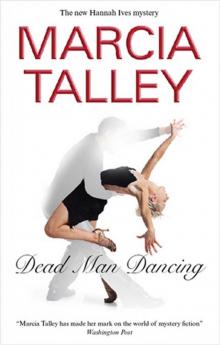 Dead Man Dancing
Dead Man Dancing Without a Grave
Without a Grave Sing It to Her Bones
Sing It to Her Bones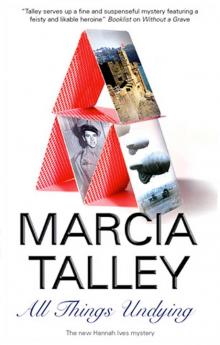 All Things Undying
All Things Undying Naked Came the Phoenix
Naked Came the Phoenix Daughter of Ashes
Daughter of Ashes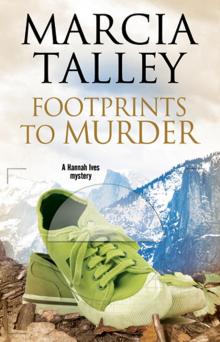 Footprints to Murder
Footprints to Murder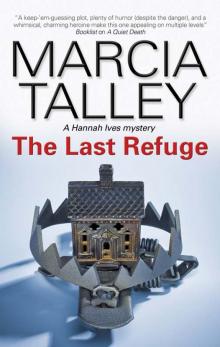 The Last Refuge
The Last Refuge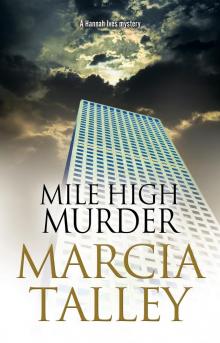 Mile High Murder
Mile High Murder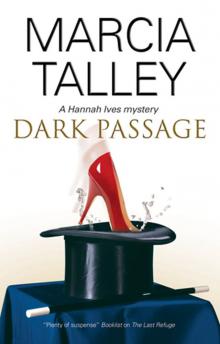 Dark Passage
Dark Passage This Enemy Town
This Enemy Town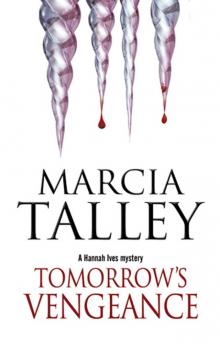 Tomorrow's Vengeance
Tomorrow's Vengeance Occasion of Revenge
Occasion of Revenge I'd Kill For That
I'd Kill For That A Quiet Death
A Quiet Death